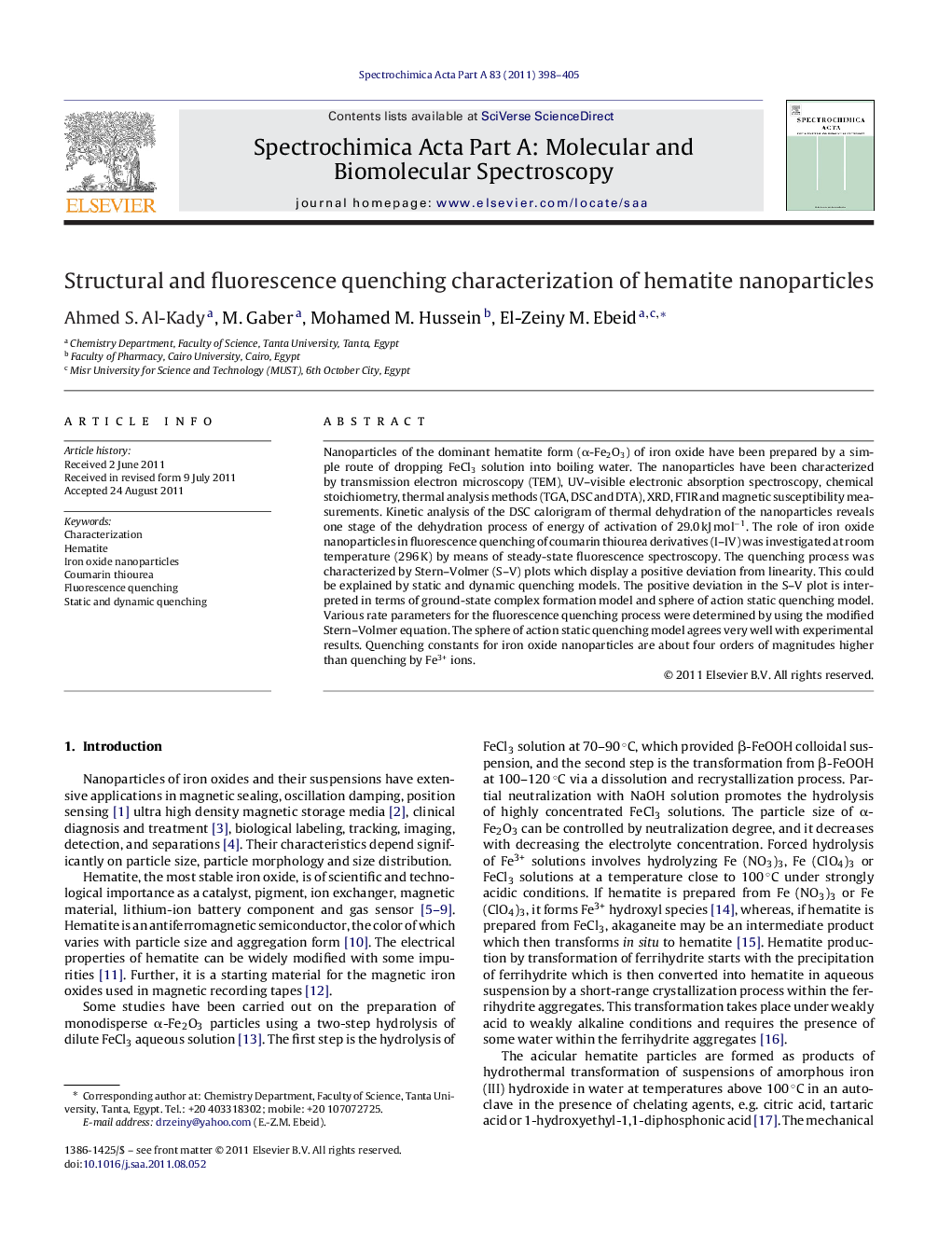| کد مقاله | کد نشریه | سال انتشار | مقاله انگلیسی | نسخه تمام متن |
|---|---|---|---|---|
| 1235197 | 968843 | 2011 | 8 صفحه PDF | دانلود رایگان |

Nanoparticles of the dominant hematite form (α-Fe2O3) of iron oxide have been prepared by a simple route of dropping FeCl3 solution into boiling water. The nanoparticles have been characterized by transmission electron microscopy (TEM), UV–visible electronic absorption spectroscopy, chemical stoichiometry, thermal analysis methods (TGA, DSC and DTA), XRD, FTIR and magnetic susceptibility measurements. Kinetic analysis of the DSC calorigram of thermal dehydration of the nanoparticles reveals one stage of the dehydration process of energy of activation of 29.0 kJ mol−1. The role of iron oxide nanoparticles in fluorescence quenching of coumarin thiourea derivatives (I–IV) was investigated at room temperature (296 K) by means of steady-state fluorescence spectroscopy. The quenching process was characterized by Stern–Volmer (S–V) plots which display a positive deviation from linearity. This could be explained by static and dynamic quenching models. The positive deviation in the S–V plot is interpreted in terms of ground-state complex formation model and sphere of action static quenching model. Various rate parameters for the fluorescence quenching process were determined by using the modified Stern–Volmer equation. The sphere of action static quenching model agrees very well with experimental results. Quenching constants for iron oxide nanoparticles are about four orders of magnitudes higher than quenching by Fe3+ ions.
Nanoparticles of iron oxide were prepared and characterized. The role of iron oxide nanoparticles in fluorescence quenching of coumarin thiourea derivatives was investigated. The quenching process was characterized by Stern–Volmer (S–V) plots which display a positive deviation from linearity. This could be explained by static and dynamic quenching models.Figure optionsDownload as PowerPoint slideHighlights
► Nanoparticles of iron oxide were prepared by a simple route of dropping FeCl3 solution into boiling water.
► The nanoparticles were characterized.
► The role of iron oxide nanoparticles in fluorescence quenching of coumarin thiourea derivatives was investigated.
► The quenching process was characterized by Stern–Volmer plots which display a positive deviation from linearity.
► This could be explained by static and dynamic quenching models.
Journal: Spectrochimica Acta Part A: Molecular and Biomolecular Spectroscopy - Volume 83, Issue 1, December 2011, Pages 398–405